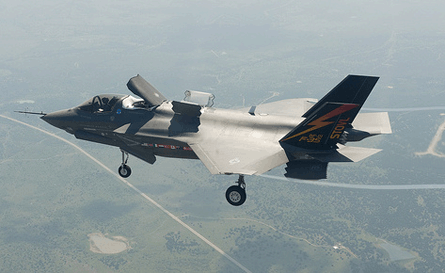As cost estimates for the Lockheed Martin F-35 continue rising, some US lawmakers are pushing military officials to increase spending on fourth-generation fighters as a back-up.
Senator Joseph Lieberman of Connecticut says he considers the F-35 a "really extraordinary aircraft", but is concerned about the military's projected tactical aircraft shortfalls.
"There will certainly be pressure to sustain the fourth generation and improvement of aircraft because the fifth generation is coming on more slowly and more expensively than we hoped for," Lieberman told a Senate hearing on the tactical aircraft budget on 13 April.
The US Navy has projected a 243-aircraft shortfall by 2017 and the US Air Force estimates a fighter gap of 800 aircraft after 2020.
Lieberman says the military should invest in a "combination of fourth and fifth generation [fighters] to keep us where we want to be". His concerns were echoed by Illinois Senator Roland Burris, who expressed his doubts in a question to the panel of military officers assembled for the hearing.
"What is the back-up plan in case we get to the point where the software won't really do what the engineers or all of the planners have anticipated and we run into a problem then of trying to scale back or make adjustments?" Burris asked.
Lt Gen George Trautman, deputy commandant for aviation for the US Marine Corps, suggests that the tactical aircraft shortfall may actually be less than currently projected. "It's almost impossible to predict, frankly, eight years from now specifically how many shortfall airplanes we're going to have, even if the ramp on [F-35s] stays precisely as we think it's going to occur today," he says. "And that's doubtful. Lockheed has been incentivised to beat the ramp that's laid out now, and they think that they can give us more [F-35s] between now and [2018]."
 |
|---|
© Lockheed Martin |
Senator Saxby Chambliss, an ardent Lockheed F-22 supporter, however, challenged Trautman's positive outlook on the F-35's future, pointedly questioning the progress achieved so far by the USMC's short take-off and vertical landing F-35B.
"I think you've tested your variant on the F-35 and I don't know what kind of confidence you have in that variant right now, but that's probably going to continue to be an issue," Chambliss says.
Meanwhile, navy and air force officials are starting to consider back-up strategies to compensate for the F-35 delays acknowledged so far. The USN is working on plans to upgrade parts of its Boeing F/A-18E/F Super Hornet fleet with 9,000h and 10,000h service life. Meanwhile, the USAF has started assessing a new structural upgrade for the its Lockheed F-16 Block 40/42 and 50/52 fleets.
It remains clear that officials from both services still consider the F-35 their most important budget priority for tactical aviation.
"We absolutely need the requirements brought by the fifth generation of the [F-35]," says Vice Adm David Architzel, a principal deputy for the USN's acquisition office. "And so we are committed to that as we go forward."
Source: Flight International
















